90% of Social Media Users Reach Out to Retailers! Why Social Media is Your Secret Weapon
August 9, 2016

Retailers have long tried to figure out if social media marketing is worth the effort. Major brands use social platform aggressively, while others are on the fence about whether social is worth the time. In fact, e-commerce vendor Custora crunched the data of about $ 100 billion in sales among 500 million shoppers and found that only 1.5% of retailers’ last-click e-commerce transactions came via social media. However, this is where the disparity comes into play. If you are looking at social media from simply click-to-purchase viewpoint, you may be missing out on a wealth of opportunities social can bring to your business.
Social media may not be the last click before purchase, but it plays an important role for retailers.
Today’s consumers are online, mobile, and social. And they expect their favorite brands to be so as well. Retailers who are succeeding in social marketing are using these platforms to build exceptional customer experiences, provide customer service, and engage with younger generations such as Millennials and Gen Z. With industry research indicating that customer experiences will soon overtake price as the deciding factor in which brands consumers ultimately choose to do business with, retailers must get on board now and establish a strong social media presence.
Social Media for Customer Service
Sprout Social has long been a proponent of social media to engage with consumers. In a recent report, Sprout surveyed more than a thousand Facebook, Twitter and Instagram users on their expectations of brand engagements on social platforms. The research indicated some pretty compelling reasons why retailers must take extra care to engage with their social followers. According to the research:
- 90% of consumers try to reach out to brands on social media
- When consumers’ questions or complaints are ignored, 36% will publically shame a brand and 1 in 3 will switch to a competitor
- 10 hours is the average amount of time it take for brands to respond
- However 4 hours is the maximum that people will wait for a response
The Sprout research also indicated that social surpasses phone and email as the first place people turn when they have a problem or issue with the product or service. The number of social messages needing a response from a brand has increased by 18% over the past year, however 89% of all social messages go ignored.
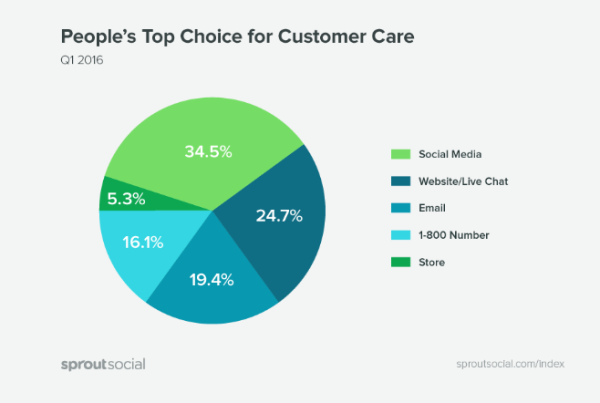
Many retailers are leaving opportunities on the table by not having a strong social customer service strategy in place. Social is about communicating and interacting with consumers and creating a personalized brand experience. This is what consumers expect and they will give their loyalty to brands who understand this.
Social media is much more than simply a channel for pushing the next promotion. While promotions and advertising on social are an important aspect of an overall marketing strategy, retailers must balance this out with consumer engagement strategies. Brands send 23 promotional messages for every 1 response given to their audience.
Social – The Good, The Bad, and The Ugly
The Bad (and Sometimes Ugly)
A poor experience on social can seriously impact the bottom line. According to the research:
- 73% of people have had a negative experience with a brand on social
- 36% of people have used social to shame a company for poor customer service
- 30% of people will go to competitor if a brand doesn’t respond
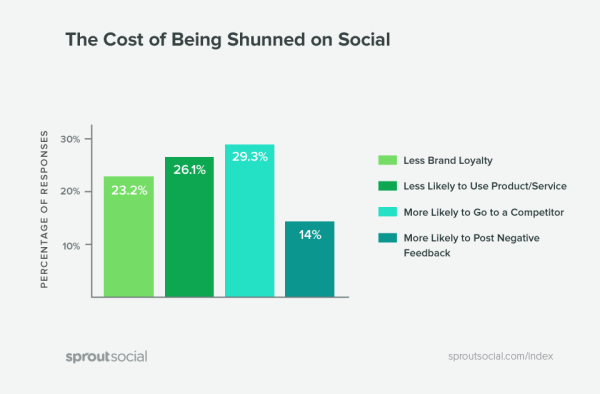
The Good
If brands provide a good experience on social, consumers will reward brands for doing so.
- 70% of people are more likely to use a brand’s product or service
- 65% of people have more brand loyalty
- 25% of people are less likely to go to a competitor
- 25% of people are less likely to post negative things about the brand, product or service
- 75% of people are likely to share a good experience on their own profile
- 43% say they’re more likely to actually make a purchase
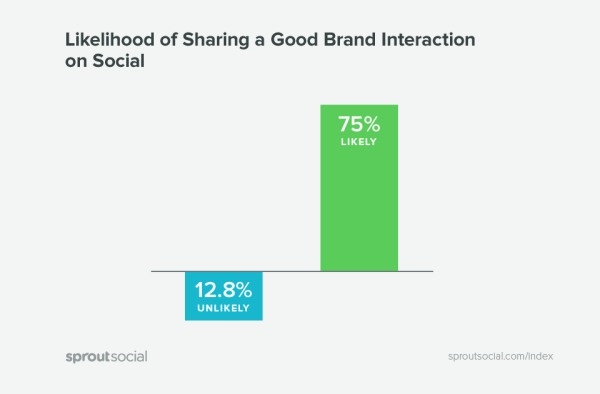
Use Social to Engage Younger Generations
While consumers across generations use social media to engage with retailers, younger generations such as millennials have a particular affinity for social media platforms. Millennials identify with brands more personally and emotionally than older generations do and social platforms offer a great platform to showcase a brand’s human side. According to a BCG survey, 50% of U.S. Millennials ages 18 to 24 and 38 percent of those ages 25 to 34 agree that brands “say something about who I am, my values, and where I fit in.”
To build brand loyalty among millennials, retailers must also engage this generation on a more personal level, using storytelling, visuals, and authenticity. Millennials appreciate being able to interact with brands and to be listened to anywhere and anytime about their concerns and experiences. A brand’s availability 24-7 is significantly more important to millennials than other generations, making social platforms an ideal channel to engage with the always-on, connected millennial consumer.
Forty-eight percent of millennials also reported that they “try to use brands of companies that are active in supporting social causes.” When asked whether “brands should help those in need,” more millennials than the U.S. average agreed that they are more likely to buy a product if they know that the company is “mindful of its social responsibilities” and that they buy from companies that “show concern for the environment and sustainability.”
Anheuser-Busch is a great example of a brand that leveraged social media to showcase the company’s work of giving back. During the holiday season, the company provided meals to those less fortunate.
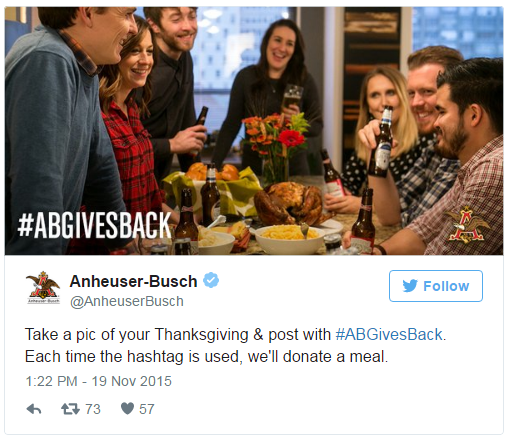
TOMS is another company who ran a Twitter campaign, featuring its commitment to give a pair of shoes to someone in need for each pair the company sold.
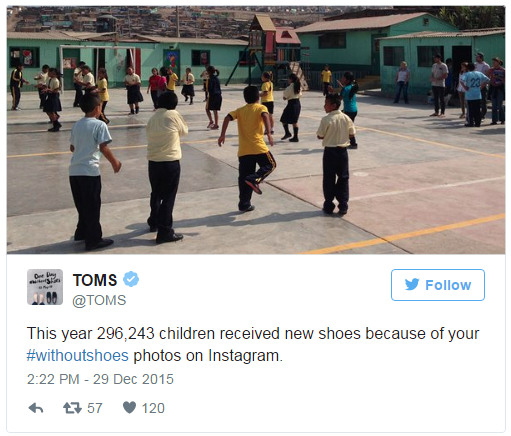
Understanding the role of social media in determining and influencing consumers’ attitudes, motivations and behaviors is more important than ever. Every retailer should be using social platforms as an integral channel to nurture relationships, provide personalized experiences, and drive new revenue streams.
Download our Retail Marketing Guide – The Evolution of Retail: Fom Real Time to Right Time Marketing. This guide will dive into the ways retailers are adapting, or should be adapting, to rising consumer demands for seamless omni-channel experiences and how Right Time Marketing is necessary to drive revenues and customer satisfaction.
Digital & Social Articles on Business 2 Community
(21)













